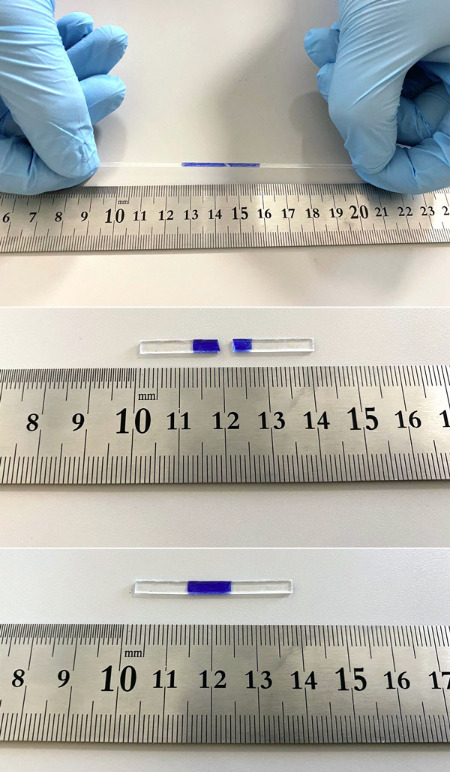Dec. 14, 2022 Research Highlight Chemistry Engineering
A robust self-healing polymer made from a common chemical
A polymer that heals itself has been made from a readily available building block
Material scientists at RIKEN have created a self-healing polymer by using an off-the-shelf compound for the first time1. The strategy they used is promising for improving the durability and minimizing the environmental impact of various commercial polymers for a wide range of applications.
Polymers capable of healing themselves when damaged would last longer and thus reduce costs and the burden on the environment. Current strategies for producing self-healing polymers mainly employ reversible chemical reactions, but this usually entails complex synthesis processes. Furthermore, self-healing mechanisms based on chemical reactions may not work in certain environments such as in water and acidic and alkaline solutions.
Ideally, material scientists would like to produce polymers that self-heal under a wide range of conditions, from readily available materials, using simple synthesis processes.
Polyolefins, which include polyethylene and polypropylene, are the most ubiquitous synthetic polymer in the world. “Polyolefins are all around us; they are used for food packaging, clothing, automobiles and electronic and medical devices,” says Zhaomin Hou of the RIKEN Center for Sustainable Resource Science. “Making self-healable polyolefins would enhance the lifetime, safety, and environmental impact of materials used in many applications.”
Now, Hou and co-workers have succeeded in making a form of the polyolefin polyisoprene—the synthetic equivalent of rubber latex, which is used in tires, rubber bands and shoe soles—that exhibits a robust, physical self-healing mechanism. Importantly, their self-healing polyisoprene is produced from the same building block as regular polyisoprene—isoprene.
To demonstrate the self-healing ability of their polymer, the team cut a block of it in half and then brought the two pieces together at room temperature for one minute (Fig. 1). The healed sample could bear weights up to 2.5 kilograms without tearing.
The secret to their success was using a rare-earth catalyst to produce a mixture of two different microstructures of polyisoprene. One microstructure was relatively hard, while the other one was soft. A ratio of the hard microstructure to the soft one of about 7:3 was optimal for the self-healing property. The team suspect that the hard microstructures link together to provide points that connect molecules and that this network gives rise to self-healing.
“The ultimate goal is to use easily available commodity monomers to produce tough self-healing polymers that are capable of spontaneously repairing when they sustain mechanical damage in real-world environments without any external input,” says Hou. “We believe that this work offers unprecedented insights to help achieve this goal.”

Figure 1: A sample of self-healing polyisoprene (bottom) was cut into two pieces (middle) and then pressed together for 15 seconds. After one minute, the sample could be stretched to more than double its original length without breaking (top).
Reproduced, with permission, from Ref. 1 © 2022 Wiley-VCH Verlag GmbH & Co. KGaA, Weinheim.
Related contents
- Strong, stretchy, self-healing polymers rapidly recover from damage
- Now polymers can self-heal, even when wet
- Scientists discover new type of self-healing material
Rate this article
Reference
- 1. Wang, H., Yang, Y., Nishiura, M., Hong, Y., Nishiyama, Y., Higaki, Y. & Hou, Z. Making polyisoprene self-healable through microstructure regulation by rare-earth catalysts Angewandte Chemie International Edition e202210023 (2022). doi: 10.1002/anie.202210023
